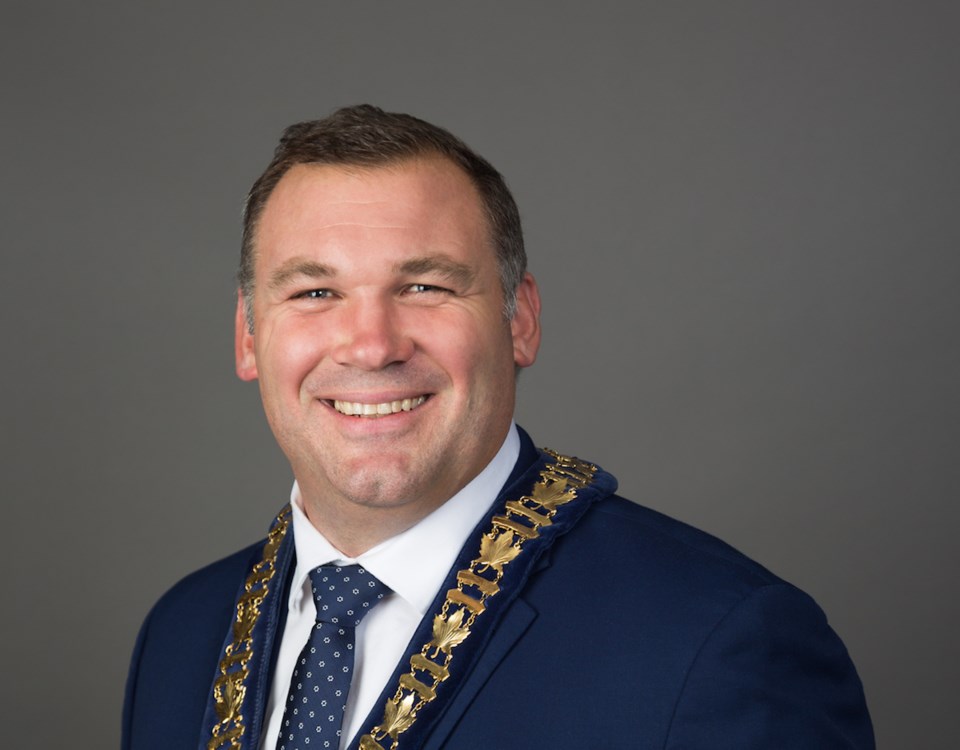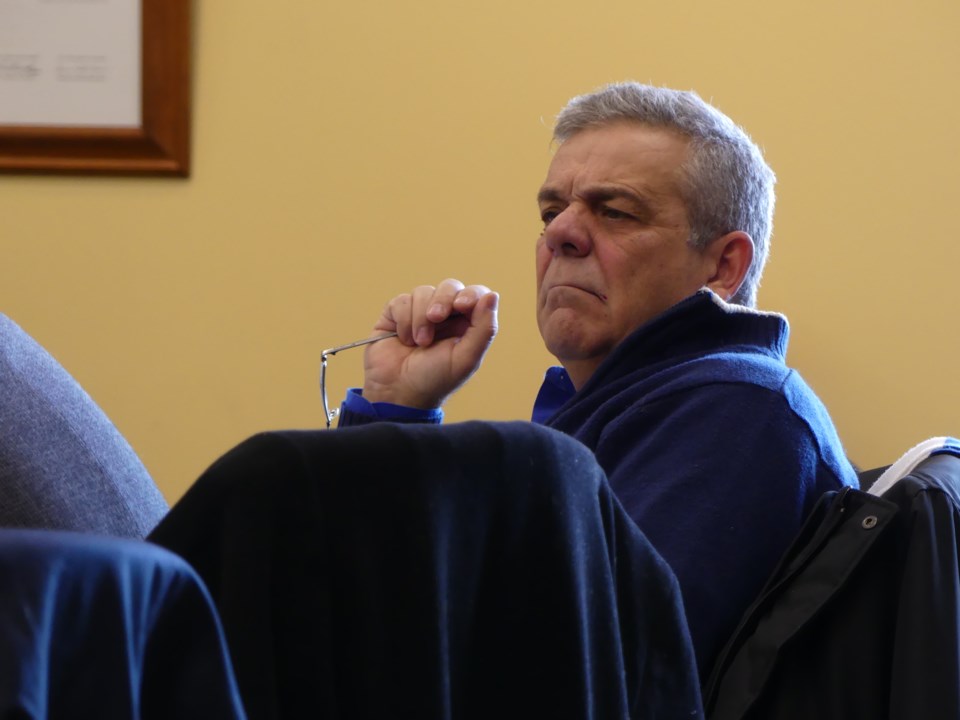With a little help from its neighbours’ land, Barrie could provide for 20,000 industrial manufacturing jobs during the next two decades.
Mayor Alex Nuttall made the pitch Monday morning to the provincial standing committee on heritage, infrastructure and cultural policy, regional governance and Bill 234, which met in Barrie at the Traditions Banquet Hall on John Street.
“We need to have an appropriate amount of industrial land to support all of the (developing) residential land that’s been taking place,” he said. “That’s been the request to the province.
“What we’ve communicated to the province is, ‘hey, here’s where our services are.' We have pipes sitting at pretty well every road intersection, as well as down the centre of roads that separate our municipalities," the mayor added.
Nuttall would not specifically say which land the city is looking at for industrial use, however.
“Some of the conversations have been with the (neighbouring) municipalities behind closed doors. I want to respect that agreement,” he told BradfordToday and InnisfilToday. “I would look, if I were you, I would look at anywhere from the east to the west boundary and to the northern part of the city where the city services are in place, because that will give you a good idea of all the lands that we’re considering at the moment.”
Nuttall said what the city wants is land that can be developed, is already on city services or fronts city services, to reduce development costs and at the same time provide for local employment.
For the first time in decades, when Barrie looks around for more land it doesn't appear to be peering toward its southern neighbour.
Innisfil Mayor Lynn Dollin, who sat on town council when the Barrie-Innisfil Boundary Adjustment Act handed over 5,600 acres of Innisfil land to Barrie in 2009, says she's pleased with the city's collaborative tone this time around.
"As long as we have land available that is serviced and housing that is affordable, we'll all be helping each other," she said. "When you're in Newmarket and driving north up Yonge Street and you get to Costco, you've crossed a municipal boundary but you wouldn't know it. Nothing stops. There's still job opportunities. What happened in Innisfil in 2009 was unfortunate because there was no compensation for any of the land given to Barrie. Any of the assets in that land were transferred to Barrie. That was the end of it."
Dollin file a lengthy written submission to the committee by Monday evening.
Simcoe is the only county under review by the committee — all other areas in the province considered for reform have adopted a regional government structure — which makes some infrastructure issues more complex, she said.
"We're the only jurisdiction that water and wastewater services isn't in the upper tier," Dollin said. "We'll put in our two cents and we're focused on growth management and having a beautiful, complete community."
Bradford and Innisfil provide a good model for lower-tier and separated city partnerships, she said, given they already share services such as policing, fire, water and wastewater.
"It takes the politics out of the pipes," Dollin said. "Just put them where they're more effective and efficient and the best return on investment. We're always happy to look into sharing services with other municipalities."

Nuttall says he has letters of support signed by all the living former Barrie mayors going back to 1988 — Janice Laking, Jim Perri, Rob Hamilton, Dave Aspden and Jeff Lehman — all endorsing and supporting additional industrial land supply for Barrie.
“This change will create 20,000 industrial, manufacturing and warehousing jobs,” Nuttall said.
And what would Barrie’s neighbours get for their land?
Nuttall’s presentation says of land identified as part of any boundary expansion, Barrie is prepared to service 10 per cent of the conveyed land back to the host municipality for its own use as a serviced employment hub.
Municipalities would pay the infrastructure costs associated with their land, with no commitment on timing.
And consideration would be given for a percentage of tax revenue to flow back to the municipalities until such time as employment land was serviced, and then it would end.
“We need to make sure there is value for all municipalities involved,” Nuttall said.
“Involved inside the request is the commitment to create a conservation plan around Little Lake, also to include the Bear Creek Wetland and the Hewitt's Creek corridor, to ensure this land is preserved in perpetuity and they’re not nibbled away at by development,” he added.
Barrie’s mayor said the need for industrial land is now.
“We’re losing employers inside of Barrie to outside the city,” Nuttall said. “They’re leaving city services like transit, wastewater, water and going to private systems out in rural municipalities.
“Barrie’s experiencing demand from existing employers who want to expand, but are constrained because we do not have shovel-ready serviced lands,” he added. “Boundary adjustments … or the subsequent rezoning of lands abutting Barrie, will allow for the advancement of serviced industrial lands to the city. The timing is perfect."
He mentioned Barrie’s Official Plan is open, allowing him to comment to the minister. Master service plans for the city are being updated and city council has $20 million in additional infrastructure funding committed to employment land strategy to help create 20 years worth of land supply.
Nuttall mentioned there are other reasons Barrie needs more industrial land and the jobs that go with it.
“We don’t want folks on the (Highway) 400 parking lot from 7 a.m. to 7 p.m., we want them with their families, we want them to be able to work here,” he said. “Where should development take place for industry? In the middle of a rural municipality, or on city services and (with) public transit?”
Monday’s provincial standing committee also featured presentations from Simcoe County Greenbelt Coalition executive director Margaret Prophet and Bradford West Gwillimbury Mayor James Leduc.
He said Bradford needs greater autonomy to better control its growth, and that having only two of 32 votes on Simcoe County council doesn’t cut it.
“We believe we have the infrastructure right now to help with growth,” Leduc said. “We need the opportunity to do our own planning to help us plan for housing.

“Two votes just doesn’t seem to work for us.” he added. “We can’t control our destiny.”
And he said Bradford West Gwillimbury has a more fundamental priority.
“We want to protect Lake Simcoe,” he said. “That’s is mostly because the best understanding of the environment comes through the local council.”
Prophet, meanwhile, said the County of Simcoe needs to play a larger role.
“My main point today is that Simcoe County is facing a lot of challenges and that removing regional governance is going to be damaging, particularly to how we manage water systems," she said.
“Right now, (lower-tier municipalities) are managing water and wastewater infrastructure and we would like to see the Simcoe County take that level because they are the ones who can see the system and help preserve it,” Prophet said. “We are at water risk in Simcoe County, based on several government reports, and so having the county manage growth from that perspective would be better for us, and our water future.”
As an upper-tier municipality, the County of Simcoe — which consists of 16 member municipalities, not including the separated cities of Barrie and Orillia — is responsible for a range of municipal services include social housing, ambulance and emergency planning, environmental services, a county road system, Ontario Works, children's services, long-term care, museum, archives, forests, tourism and land-use policy planning.
Lower-tier municipalities (towns and townships) are responsible for water and sewer services, local roads, public libraries, recreation services, fire and police services, land-use development control, licensing and permitting services.
Barrie and Orillia pay into the county coffers for several services, for operating and capital costs, toward social services, land ambulances and paramedics, long-time care, preventing homelessness, Ontario Works, seniors and children’s services.
The provincial standing committee on heritage, infrastructure and cultural policy, regional governance and Bill 234 will help determine if that changes.
— With files from Chris Simon



